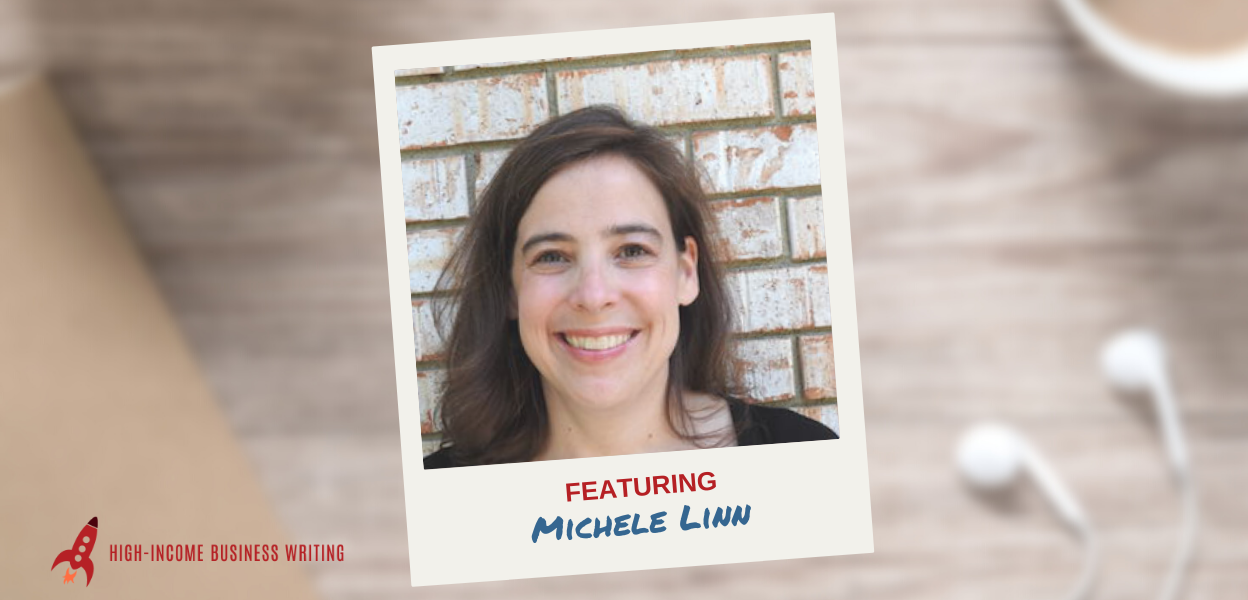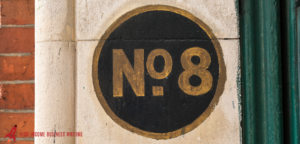One of the big challenges writers face is having to continually find new clients and writing assignments.
Unless all your clients feed you a ton of work every month, you have to constantly hustle to find new opportunities.
Fortunately, you can break this cycle.
And adding original research to your list of services is one way to do it.
Not only do original research projects bring a handsome fee, but they also create a wellspring of new writing assignments that can keep you busy for months.
We’ve talked about original research on this show before with Sarah Greensonbach, the founder of the B2B Writing Institute.
But it’s been a couple of years, so I wanted to revisit the topic.
So today, I’m thrilled to be joined by Michele Linn, co-founder and Chief Strategy Officer for Mantis Research.
In this episode, Michele talks about how she got into original research, what the work entails, how she finds and lands clients, and how much these projects command in fees.
Best of all, she explains how one original research project can quickly turn into many individual writing assignments that will keep you very busy for a good while.
The notes that follow are a very basic, unedited summary of the show. There’s a lot more detail in the audio version. You can listen to the show using the audio player below. Or you can subscribe on Apple Podcasts, Spotify, Stitcher, Google Podcasts, Amazon Music or wherever you listen to podcasts.


High-Income Business Writing with Ed Gandia
#278: How ‘Original Research’ Projects Create a Wellspring of Profitable Writing Assignments
Tell us a bit about yourself
Michele got her start in corporate product marketing. She went freelance in 2008.
She fell into content marketing and eventually started working for the Content Marketing Institute (CMI) and founder Joe Pulizzi.
CMI does a big original research project every year where they survey marketers. Michele played a key role in this annual project and loved the work.
Michele eventually left CMI and started Mantis Research, which helps marketers create and publish their own original research.
How would you define original research?
Michele defines original research as any research that a company does that is original and proprietary to its brand.
It could be either survey-based research or original data analysis research.
Original research is always data-driven.
Why has original research become so popular over the past few years?
You used to be able to publish a blog post and get attention.
But the space is so noisy now, pushing out any old content doesn’t cut it.
Original research is popular because it’s original and unique.
Of course, more people are doing original research, so you have to find your own unique niche. But because you’re putting out something new, it can work really well.
What are some of the pitfalls of original research?
You never know what’s going to come back from your survey.
It’s important not to go in trying to prove or disprove what you believe. Don’t try to create the data that will validate the thing you believe to be true.
Start by researching the original research that already exists in your space to see if your ideas have legs.
Ask yourself what questions your audience has—and use your research to try and answer them.
What are the steps in the original research process?
- Collect credible data. Make sure the people are who they say they are, especially if you’re using panel companies. Make sure your questions won’t be misinterpreted.
- Tell a compelling story. Ask questions that will uncover gaps and reveal opportunities. Try to take your survey beyond just benchmark stats.
- Have a plan for launch. How you release your finding into the world will give your project life.
What are panel companies?
If your client doesn’t have a list of people that you can survey, you can use a panel company.
Panel companies provide respondents for your survey for a fee. But you have to make sure their respondents actually belong to the market you want to survey.
Rep Data is Michele’s preferred panel company.
Does the writer typically draft the survey questions?
Usually, the client comes up with the idea, and the writer works with the client to formulate the questions. You need to make sure the questions aren’t too jargony or leading.
Michele is currently working on a course that will help writers and their clients formulate good survey questions.
One tip: Put all your questions into a spreadsheet along with the reasons why you’re asking each question. It’s a good way to double-check that all questions are necessary.
Think about the story as you formulate your questions. Look for points of friction or contradiction that you can build on in your report.
Consider breaking your analysis down by different market segments—these can provide a good backbone for stories.
Do original research projects often lead to other types of projects for the client?
Absolutely. When you complete one of these projects, you have a wealth of content that can be used as a source for blog posts, webinars, other publications, guest posts, landing pages, etc.
It’s a great revenue opportunity for writers that can go on for months.
What are the fee ranges for original research projects for writers?
When Michele first started, she charged $10K to do the research strategy, survey design, data collection and analysis.
Today, her fees start at $15K because she brings more experience to it.
These fees don’t include the actual report. It also doesn’t include the costs of a panel company if needed.
What kind of writer is this work well suited for?
If you’re a writer who loves to write, you may want to partner with someone else to do the research part.
But if you like to work on different things and trying to make sense of inputs and presenting those inputs in a compelling way—that’s a good fit.
If it’s not a perfect fit, you can always look for other people to help you out in the areas you don’t enjoy or aren’t good at.
How do you find clients for this kind of work?
Your best opportunities are often with existing clients and through word of mouth.
If your existing clients haven’t done original research before, you have to sell them on the idea.
Michele has reached out to people who are already doing original research and connected with them in a genuine way. She ended up getting referred to others, which snowballed into other clients.
You could pitch to cold prospects, but that would be an uphill battle.
How can listeners learn more about you?
Michele’s website: Mantis Research.
Sign up for her monthly email newsletter to get tips and examples of original research.
By the way… whenever you’re ready, here are 3 ways I can help you grow your freelance business:
1. Grab a free copy of my book.
It’s called Earn More in Less Time: The Proven Mindset, Strategies and Actions to Prosper as a Freelance Writer. The title says it all. 😉 — Click Here
2. Join my implementation program and be a case study.
I’m putting together a new implementation group this month. If you’re earning $5k+/month (or the part-time equivalent) from your freelance business … and you’d like to grow your income quickly with better clients … just email me at ed@b2blauncher.com
3. Work with me privately.
If you’re a 6-figure writer who’s trying to earn more in less time, with less stress, I might be able to help you get there faster than you think. Just email me at ed@b2blauncher.com and put “Breakthrough” in the subject line, and I’ll get back to you with more details.






